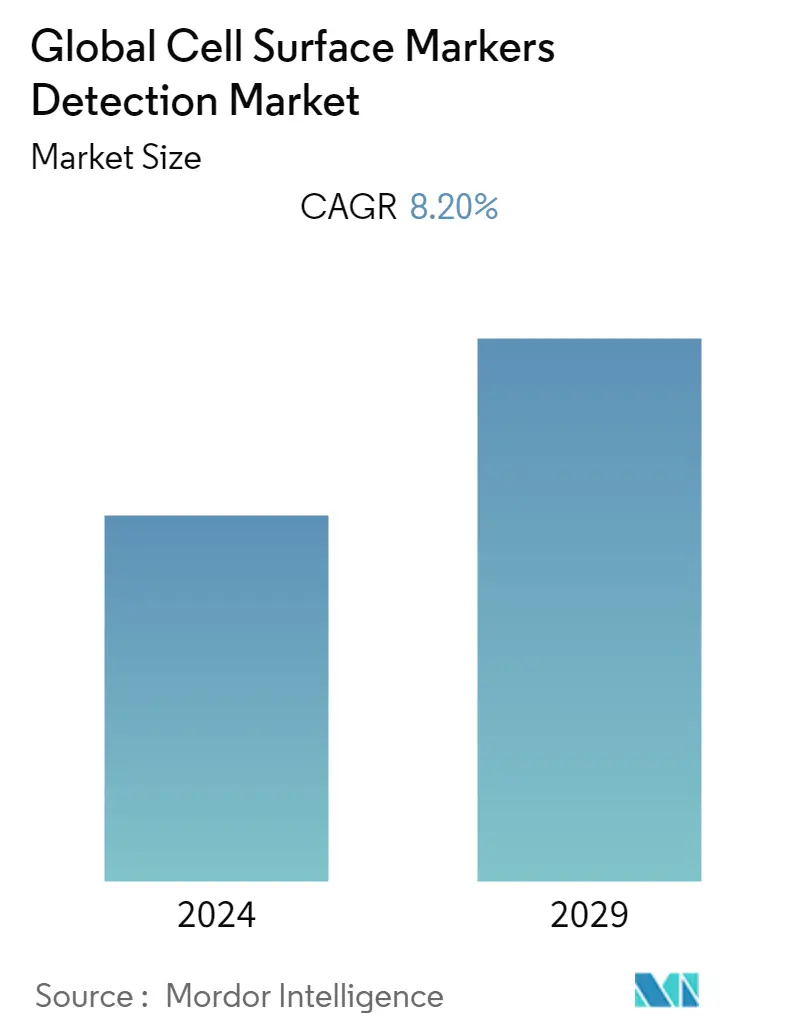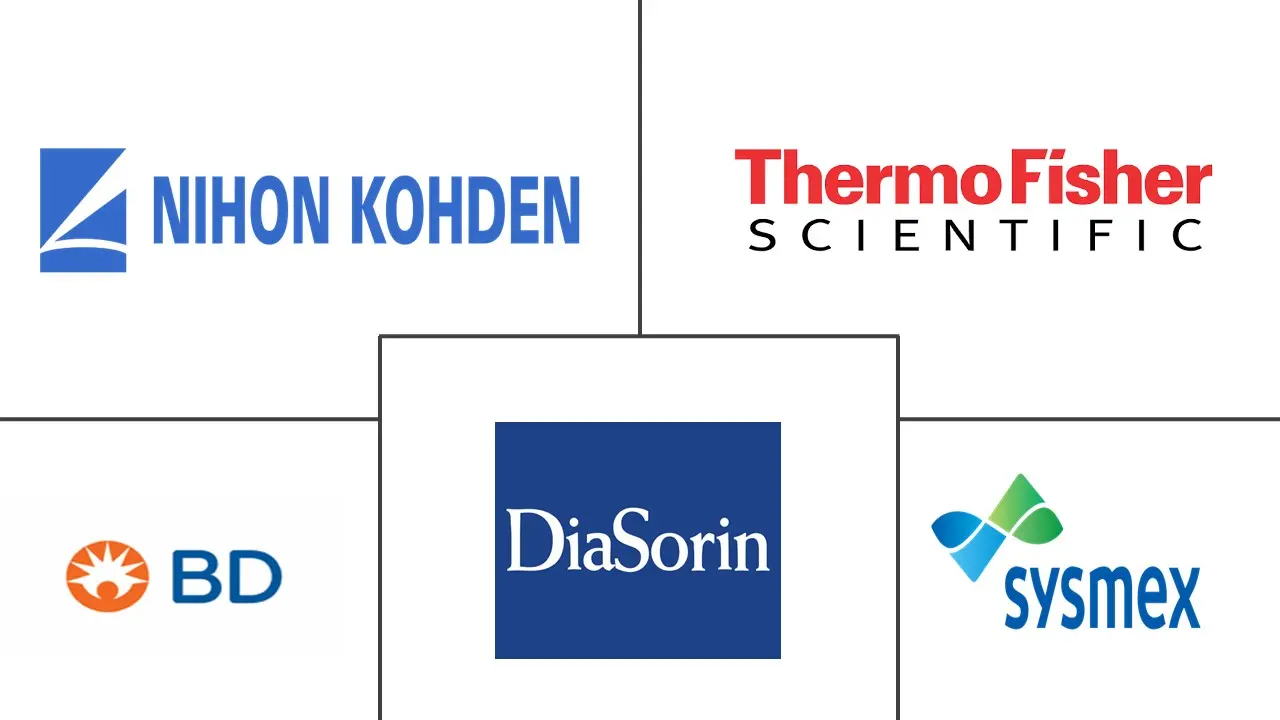Market Size of Global Cell Surface Markers Detection Industry

| Study Period | 2019 - 2029 |
| Base Year For Estimation | 2023 |
| CAGR | 8.20 % |
| Fastest Growing Market | Asia-Pacific |
| Largest Market | North America |
| Market Concentration | Low |
Major Players
*Disclaimer: Major Players sorted in no particular order |
Need a report that reflects how COVID-19 has impacted this market and its growth?
Cell Surface Markers Detection Market Analysis
The cell surface markers detection market is estimated to register a CAGR of 8.2% during the forecast period.
The COVID-19 pandemic had a significant impact on the market. Many research projects were carried out that involved the interaction of COVID-19 antibodies with cell surface markers. For instance, in February 2021, a research article published in Frontiers in Immunology studied and compared the cell surface marker expression on the monocytes of COVID-19 patients with healthy controls. The study found an increased rate of fungal co-infections in COVID-19 patients. The rate of secondary fungal infections increased in many COVID-19 patients due to their decreased immunity.
Additionally, according to an article published by the National Library of Medicine in December 2021, differences in the immune response point towards different COVID-19-specific immune markers that correlate with disease severity and are employed for the optimization of flow cytometry assays for the diagnosis and monitoring of COVID-19 progression. The study further stated that these markers could elucidate the underlying causes of different responses that could arise from a history of previous similar infections or genetic, individual, and environmental differences. Therefore, due to the advantage, the demand for cell surface markers detection increased during the COVID-19 pandemic and is expected to grow in the coming period.
The major factors driving the market's growth include the increasing demand for precision medicine, increased use of diagnostics, and technological advances related to increased throughput and automation. For instance, according to the study published in Frontiers in Cell and Developmental Biology in January 2021, high-content screening has aided in the comprehension of varied downstream effects for multiple treatments on cancer cells, specifically organelle targets, estimating the overall cellular response efficiently for new candidate molecules, and evaluating signaling heterogeneity. The rising use in understanding cancer cell response to novel drugs is expected to drive market growth.
Furthermore, the development of innovative products is also contributing to market growth. For instance, in June 2021, Leica Microsystems launched the Leica Nano workflow, a new live-cell correlative light, and electron microscopy (CLEM) workflow solution designed to increase experimental success rates, improve reproducibility, and simplify light and electron microscopy (EM) integration. Also, in October 2021, BD Life Sciences-Biosciences, in collaboration with Christian Medical College, Vellore, launched its second Center of Excellence (CoE) in flow cytometry for clinical research in India. Such developments boost the demand for cell surface markers detection, thereby driving the market growth.
However, the instruments' high cost and the techniques' complexity restrain the market growth.
